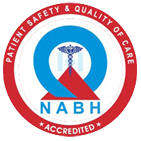What is actinic keratosis?Actinic keratosis is a skin disorder in which rough, scaly, or dry patches or lesions develop on sun-exposed parts of the body. These patches or lesions are precancerous, and if left untreated, there is a small risk that they can turn into a type of skin cancer called squamous cell carcinoma.
What are the symptoms of actinic keratosis?An actinic keratosis (plural "keratoses") may appear as a scaly, raised, or rough area of skin. The keratosis can be pink, red, or brown; sometimes it is the same color as normal skin, but feels rough or dry to the touch. They are easier to feel than to see.
Actinic keratoses are more likely to develop on parts of the body that get the most exposure to the sun, such as the face, ears, neck, hands, and forearms. Peeling or cracking lips, especially the lower lip, after sun exposure might also be a sign of actinic keratosis.
What causes actinic keratosis?The major cause of actinic keratosis is excessive sunlight (natural light such as the sun or artificial light such as a tanning bed). Long-term exposure to the ultraviolet rays in sunlight causes chemical changes in skin cells known as keratinocytes, which make up 90 percent of the epidermis (the outermost layer of the skin). These keratinocytes then undergo changes in their size, shape, and organization.
Who is at risk for actinic keratosis?The following groups are at greater risk for developing actinic keratosis:
· People with light or fair complexions
· People with blond or red hair
· People with blue or green eyes
· People whose immune systems are weakened from illness or immunotherapy
· Middle-aged and older people whose skin has been damaged by years of sun exposure
Actinic keratosis is very common and occurs in millions of Americans. The number of cases is growing because people are failing to take the proper steps to protect themselves from sun exposure.
How is actinic keratosis diagnosed?People who are at risk for any kind of skin disorder should check their skin on a regular basis. If you notice any persistent bumps or spots with an unusual color, texture, shape, or size, contact your health care provider or a dermatologist. Other concerning signs are pimples that don't heal and anything that bleeds easily. Your doctor might perform a skin biopsy by removing part or all of the growth to determine if cancer cells are present.
How is actinic keratosis treated?In most cases, actinic keratosis can be treated and cured. The outcome is more favorable if the condition is detected during its early stages. Treatment options include the following:
· Topical (applied directly to the skin) lotions or creams
· Cryosurgery (freezing)
· Electrosurgery (use of an electric current)
· Dermabrasion (the skin is frozen and then a specialized instrument is used to "sand" the skin)
· Laser resurfacing
· Photodynamic therapy (PDT). PDT uses a cream applied to the skin and a special light to destroy pre-cancer cells of the skin.
· The type of treatment depends on the location, number, size, and severity of the lesions. A combination of methods might be used in some cases.
How can you prevent actinic keratosis?The best way to prevent actinic keratosis is to reduce your exposure to the sun, especially during peak hours when sunlight is most intense. Here are some methods:
· Wear long-sleeved shirts, pants, and a hat to protect areas of skin that might be exposed to the sun.
· Apply a sunscreen with a sun protection factor (SPF) of 30 or higher at least 30 minutes before going outdoors. A broad-spectrum sunscreen is recommended to protect the skin from both ultraviolet A and B rays.
· Avoid trying to get a tan by staying out in the sun or using tanning beds; use self-tanning products instead.




